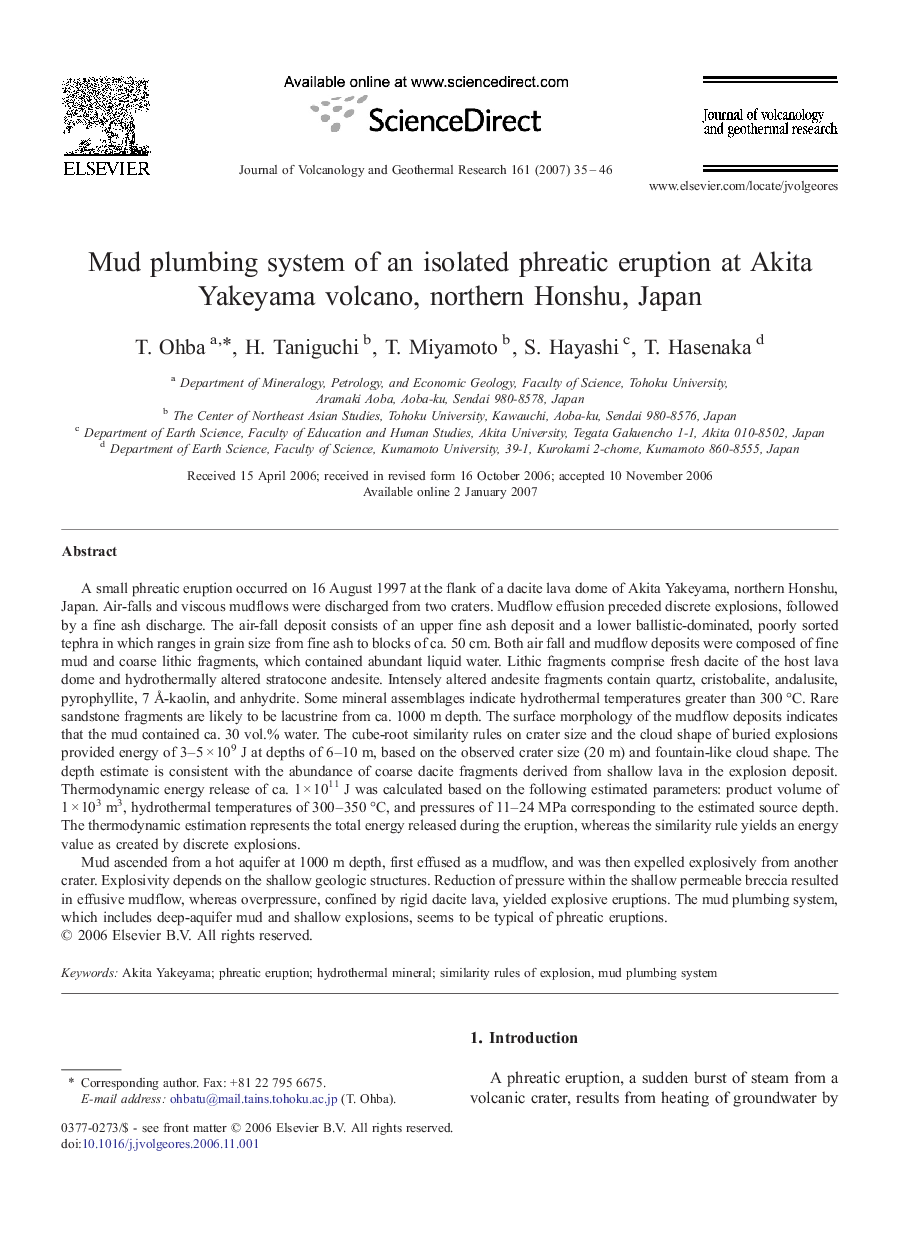| کد مقاله | کد نشریه | سال انتشار | مقاله انگلیسی | نسخه تمام متن |
|---|---|---|---|---|
| 4714874 | 1638466 | 2007 | 12 صفحه PDF | دانلود رایگان |

A small phreatic eruption occurred on 16 August 1997 at the flank of a dacite lava dome of Akita Yakeyama, northern Honshu, Japan. Air-falls and viscous mudflows were discharged from two craters. Mudflow effusion preceded discrete explosions, followed by a fine ash discharge. The air-fall deposit consists of an upper fine ash deposit and a lower ballistic-dominated, poorly sorted tephra in which ranges in grain size from fine ash to blocks of ca. 50 cm. Both air fall and mudflow deposits were composed of fine mud and coarse lithic fragments, which contained abundant liquid water. Lithic fragments comprise fresh dacite of the host lava dome and hydrothermally altered stratocone andesite. Intensely altered andesite fragments contain quartz, cristobalite, andalusite, pyrophyllite, 7 Å-kaolin, and anhydrite. Some mineral assemblages indicate hydrothermal temperatures greater than 300 °C. Rare sandstone fragments are likely to be lacustrine from ca. 1000 m depth. The surface morphology of the mudflow deposits indicates that the mud contained ca. 30 vol.% water. The cube-root similarity rules on crater size and the cloud shape of buried explosions provided energy of 3–5 × 109 J at depths of 6–10 m, based on the observed crater size (20 m) and fountain-like cloud shape. The depth estimate is consistent with the abundance of coarse dacite fragments derived from shallow lava in the explosion deposit. Thermodynamic energy release of ca. 1 × 1011 J was calculated based on the following estimated parameters: product volume of 1 × 103 m3, hydrothermal temperatures of 300–350 °C, and pressures of 11–24 MPa corresponding to the estimated source depth. The thermodynamic estimation represents the total energy released during the eruption, whereas the similarity rule yields an energy value as created by discrete explosions.Mud ascended from a hot aquifer at 1000 m depth, first effused as a mudflow, and was then expelled explosively from another crater. Explosivity depends on the shallow geologic structures. Reduction of pressure within the shallow permeable breccia resulted in effusive mudflow, whereas overpressure, confined by rigid dacite lava, yielded explosive eruptions. The mud plumbing system, which includes deep-aquifer mud and shallow explosions, seems to be typical of phreatic eruptions.
Journal: Journal of Volcanology and Geothermal Research - Volume 161, Issues 1–2, 1 March 2007, Pages 35–46